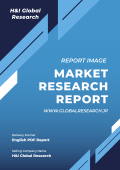1. Preface
1.1. Market Definition and Scope
1.2. Market Segmentation
1.3. Key Research Objectives
1.4. Research Highlights
2. Assumptions and Research Methodology
3. Executive Summary: Global Next Generation Sequencers (NGS) Market
4. Market Overview
4.1. Introduction
4.1.1. Definition
4.1.2. Industry Evolution / Developments
4.2. Overview
4.3. Market Dynamics
4.3.1. Drivers
4.3.2. Restraints
4.3.3. Opportunities
4.4. Global Next Generation Sequencers (NGS) Market Analysis and Forecast, 2017–2031
4.4.1. Market Revenue Projections (US$ Mn)
5. Key Insights
5.1. Technological Advancements
5.2. Regulatory Scenario
5.3. COVID-19 Pandemic Impact on Industry
6. Global Next Generation Sequencers (NGS) Market Analysis and Forecast, by Product
6.1. Introduction & Definition
6.2. Key Findings / Developments
6.3. Market Value Forecast, by Product, 2017–2031
6.3.1. Benchtop Sequencers
6.3.2. Floor Standing Sequencers
6.4. Market Attractiveness Analysis, by Product
7. Global Next Generation Sequencers (NGS) Market Analysis and Forecast, by Application
7.1. Introduction & Definition
7.2. Key Findings / Developments
7.3. Market Value Forecast, by Application, 2017–2031
7.3.1. Oncology
7.3.2. Infectious Diseases
7.3.3. Reproductive Health
7.3.4. Metagenomics, Epidemiology, and Drug Development
7.3.5. Consumer Genomics
7.4. Market Attractiveness Analysis, by Application
8. Global Next Generation Sequencers (NGS) Market Analysis and Forecast, by Technology
8.1. Introduction & Definition
8.2. Key Findings / Developments
8.3. Market Value Forecast, by Technology, 2017–2031
8.3.1. WGS
8.3.2. Whole Exome Sequencing
8.3.3. Targeted Sequencing & Resequencing
8.4. Market Attractiveness Analysis, by Technology
9. Global Next Generation Sequencers (NGS) Market Analysis and Forecast, by End-user
9.1. Introduction & Definition
9.2. Key Findings / Developments
9.3. Market Value Forecast, by End-user, 2017–2031
9.3.1. Academic Research
9.3.2. Clinical Research
9.3.3. Hospitals & Clinics
9.3.4. Pharma & Biotech Entities
9.3.5. Others
9.4. Market Attractiveness Analysis, by End-user
10. Global Next Generation Sequencers (NGS) Market Analysis and Forecast, by Region
10.1. Key Findings
10.2. Market Value Forecast, by Region
10.2.1. North America
10.2.2. Europe
10.2.3. Asia Pacific
10.2.4. Latin America
10.2.5. Middle East & Africa
10.3. Market Attractiveness Analysis, by Region
11. North America Next Generation Sequencers (NGS) Market Analysis and Forecast
11.1. Introduction
11.1.1. Key Findings
11.2. Market Value Forecast, by Product, 2017–2031
11.2.1. Benchtop Sequencers
11.2.2. Floor Standing Sequencers
11.3. Market Value Forecast, by Application, 2017–2031
11.3.1. Oncology
11.3.2. Infectious Diseases
11.3.3. Reproductive Health
11.3.4. Metagenomics, Epidemiology, and Drug Development
11.3.5. Consumer Genomics
11.4. Market Value Forecast, by Technology, 2017–2031
11.4.1. WGS
11.4.2. Whole Exome Sequencing
11.4.3. Targeted Sequencing & Resequencing
11.5. Market Value Forecast, by End-user, 2017–2031
11.5.1. Academic Research
11.5.2. Clinical Research
11.5.3. Hospitals & Clinics
11.5.4. Pharma & Biotech Entities
11.5.5. Others
11.6. Market Value Forecast, by Country, 2017–2031
11.6.1. U.S.
11.6.2. Canada
11.7. Market Attractiveness Analysis
11.7.1. By Product
11.7.2. By Application
11.7.3. By Technology
11.7.4. By End-user
11.7.5. By Country
12. Europe Next Generation Sequencers (NGS) Market Analysis and Forecast
12.1. Introduction
12.1.1. Key Findings
12.2. Market Value Forecast, by Product, 2017–2031
12.2.1. Benchtop Sequencers
12.2.2. Floor Standing Sequencers
12.3. Market Value Forecast, by Application, 2017–2031
12.3.1. Oncology
12.3.2. Infectious Diseases
12.3.3. Reproductive Health
12.3.4. Metagenomics, Epidemiology, and Drug Development
12.3.5. Consumer Genomics
12.4. Market Value Forecast, by Technology, 2017–2031
12.4.1. WGS
12.4.2. Whole Exome Sequencing
12.4.3. Targeted Sequencing & Resequencing
12.5. Market Value Forecast, by End-user, 2017–2031
12.5.1. Academic Research
12.5.2. Clinical Research
12.5.3. Hospitals & Clinics
12.5.4. Pharma & Biotech Entities
12.5.5. Others
12.6. Market Value Forecast, by Country/Sub-region, 2017–2031
12.6.1. Germany
12.6.2. U.K.
12.6.3. France
12.6.4. Spain
12.6.5. Italy
12.6.6. Rest of Europe
12.7. Market Attractiveness Analysis
12.7.1. By Product
12.7.2. By Application
12.7.3. By Technology
12.7.4. By End-user
12.7.5. By Country/Sub-region
13. Asia Pacific Next Generation Sequencers (NGS) Market Analysis and Forecast
13.1. Introduction
13.1.1. Key Findings
13.2. Market Value Forecast, by Product, 2017–2031
13.2.1. Benchtop Sequencers
13.2.2. Floor Standing Sequencers
13.3. Market Value Forecast, by Application, 2017–2031
13.3.1. Oncology
13.3.2. Infectious Diseases
13.3.3. Reproductive Health
13.3.4. Metagenomics, Epidemiology, and Drug Development
13.3.5. Consumer Genomics
13.4. Market Value Forecast, by Technology, 2017–2031
13.4.1. WGS
13.4.2. Whole Exome Sequencing
13.4.3. Targeted Sequencing & Resequencing
13.5. Market Value Forecast, by End-user, 2017–2031
13.5.1. Academic Research
13.5.2. Clinical Research
13.5.3. Hospitals & Clinics
13.5.4. Pharma & Biotech Entities
13.5.5. Others
13.6. Market Value Forecast, by Country/Sub-region, 2017–2031
13.6.1. China
13.6.2. Japan
13.6.3. India
13.6.4. Australia & New Zealand
13.6.5. Rest of Asia Pacific
13.7. Market Attractiveness Analysis
13.7.1. By Product
13.7.2. By Application
13.7.3. By Technology
13.7.4. By End-user
13.7.5. By Country/Sub-region
14. Latin America Next Generation Sequencers (NGS) Market Analysis and Forecast
14.1. Introduction
14.1.1. Key Findings
14.2. Market Value Forecast, by Product, 2017–2031
14.2.1. Benchtop Sequencers
14.2.2. Floor Standing Sequencers
14.3. Market Value Forecast, by Application, 2017–2031
14.3.1. Oncology
14.3.2. Infectious Diseases
14.3.3. Reproductive Health
14.3.4. Metagenomics, Epidemiology, and Drug Development
14.3.5. Consumer Genomics
14.4. Market Value Forecast, by Technology, 2017–2031
14.4.1. WGS
14.4.2. Whole Exome Sequencing
14.4.3. Targeted Sequencing & Resequencing
14.5. Market Value Forecast, by End-user, 2017–2031
14.5.1. Academic Research
14.5.2. Clinical Research
14.5.3. Hospitals & Clinics
14.5.4. Pharma & Biotech Entities
14.5.5. Others
14.6. Market Value Forecast, by Country/Sub-region, 2017–2031
14.6.1. Brazil
14.6.2. Mexico
14.6.3. Rest of Latin America
14.7. Market Attractiveness Analysis
14.7.1. By Product
14.7.2. By Application
14.7.3. By Technology
14.7.4. By End-user
14.7.5. By Country/Sub-region
15. Middle East & Africa Next Generation Sequencers (NGS) Market Analysis and Forecast
15.1. Introduction
15.1.1. Key Findings
15.2. Market Value Forecast, by Product, 2017–2031
15.2.1. Benchtop Sequencers
15.2.2. Floor Standing Sequencers
15.3. Market Value Forecast, by Application, 2017–2031
15.3.1. Oncology
15.3.2. Infectious Diseases
15.3.3. Reproductive Health
15.3.4. Metagenomics, Epidemiology, and Drug Development
15.3.5. Consumer Genomics
15.4. Market Value Forecast, by Technology, 2017–2031
15.4.1. WGS
15.4.2. Whole Exome Sequencing
15.4.3. Targeted Sequencing & Resequencing
15.5. Market Value Forecast, by End-user, 2017–2031
15.5.1. Academic Research
15.5.2. Clinical Research
15.5.3. Hospitals & Clinics
15.5.4. Pharma & Biotech Entities
15.5.5. Others
15.6. Market Value Forecast, by Country/Sub-region, 2017–2031
15.6.1. GCC Countries
15.6.2. South Africa
15.6.3. Rest of Middle East & Africa
15.7. Market Attractiveness Analysis
15.7.1. By Product
15.7.2. By Application
15.7.3. By Technology
15.7.4. By End-user
15.7.5. By Country/Sub-region
16. Competition Landscape
16.1. Market Player – Competition Matrix (by tier and size of companies)
16.2. Market Share Analysis, by Company (2022)
16.3. Company Profiles
16.3.1. Illumina, Inc.
16.3.1.1. Company Overview (HQ, Business Segments, Employee Strength)
16.3.1.2. Product Portfolio
16.3.1.3. Financial Overview
16.3.1.4. SWOT Analysis
16.3.1.5. Strategic Overview
16.3.2. Thermo Fisher Scientific, Inc.
16.3.2.1. Company Overview (HQ, Business Segments, Employee Strength)
16.3.2.2. Product Portfolio
16.3.2.3. Financial Overview
16.3.2.4. SWOT Analysis
16.3.2.5. Strategic Overview
16.3.3. Pacific Biosciences
16.3.3.1. Company Overview (HQ, Business Segments, Employee Strength)
16.3.3.2. Product Portfolio
16.3.3.3. Financial Overview
16.3.3.4. SWOT Analysis
16.3.3.5. Strategic Overview
16.3.4. Complete Genomics Incorporated
16.3.4.1. Company Overview (HQ, Business Segments, Employee Strength)
16.3.4.2. Product Portfolio
16.3.4.3. Financial Overview
16.3.4.4. SWOT Analysis
16.3.4.5. Strategic Overview
16.3.5. Vela Diagnostics
16.3.5.1. Company Overview (HQ, Business Segments, Employee Strength)
16.3.5.2. Product Portfolio
16.3.5.3. Financial Overview
16.3.5.4. SWOT Analysis
16.3.5.5. Strategic Overview
16.3.6. Oxford Nanopore Technologies plc.
16.3.6.1. Company Overview (HQ, Business Segments, Employee Strength)
16.3.6.2. Product Portfolio
16.3.6.3. Financial Overview
16.3.6.4. SWOT Analysis
16.3.6.5. Strategic Overview
16.3.7. Singular Genomics Systems, Inc.
16.3.7.1. Company Overview (HQ, Business Segments, Employee Strength)
16.3.7.2. Product Portfolio
16.3.7.3. Financial Overview
16.3.7.4. SWOT Analysis
16.3.7.5. Strategic Overview
16.3.8. HTG Molecular Diagnostics, Inc.
16.3.8.1. Company Overview (HQ, Business Segments, Employee Strength)
16.3.8.2. Product Portfolio
16.3.8.3. Financial Overview
16.3.8.4. SWOT Analysis
16.3.8.5. Strategic Overview
16.3.9. Revvity
16.3.9.1. Company Overview (HQ, Business Segments, Employee Strength)
16.3.9.2. Product Portfolio
16.3.9.3. Financial Overview
16.3.9.4. SWOT Analysis
16.3.9.5. Strategic Overview
❖ 免責事項 ❖
http://www.globalresearch.jp/disclaimer












